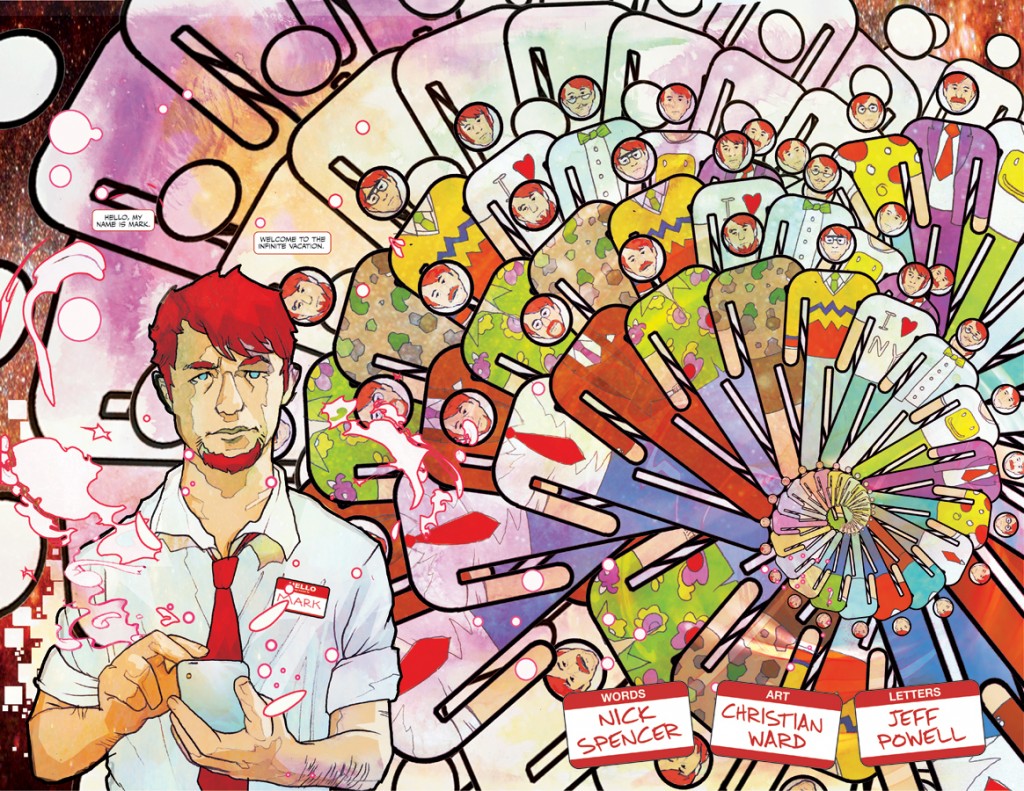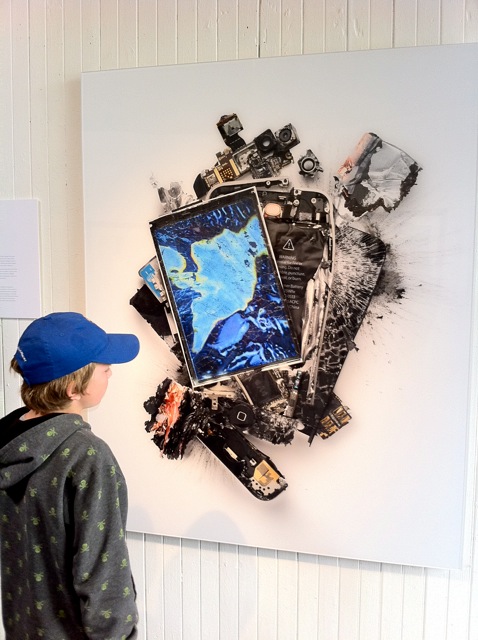 While the tide is turning, comics are still an under-appreciated medium in 2011. This despite increased interest in superheroes given the Hollywood treatment and critical attention to thoughtful indie pieces like Fun Home and Love and Rockets. It’s a shame because comics’ juxtaposed panels, their special way of framing time in terms of space, are well equipped to address those intersections of identity, technology, and visual representation that get so much play in mainstream and academic press. Image Comics’ Infinite Vacation is one new ongoing title that tackles those ideas head on.
While the tide is turning, comics are still an under-appreciated medium in 2011. This despite increased interest in superheroes given the Hollywood treatment and critical attention to thoughtful indie pieces like Fun Home and Love and Rockets. It’s a shame because comics’ juxtaposed panels, their special way of framing time in terms of space, are well equipped to address those intersections of identity, technology, and visual representation that get so much play in mainstream and academic press. Image Comics’ Infinite Vacation is one new ongoing title that tackles those ideas head on.
Writer Nick Spencer is a rising star whose big hit, Morning Glories, blends teenage drama with the surreal paranoia of 60s TV thriller The Prisoner. In Infinite Vacation, Spencer teams with artist Christian Ward to tell the story of Mark, daily user of a ubiquitous, near-future technology which allows anyone to buy or sell their existence in parallel universes through a smartphone app; for $25,000 Mark can become the hero cop version of himself, and it’ll cost at least $3000 for him to become a Mark who did not just get walked out on by that mystery girl in the coffee shop.
Mark is a cyborg less like Robocop and more like the average Facebook user who presents their preferred self to the world via an array of edited images, clicked “likes”, and comments with friends (i.e., exactly how Cyborgology editors define the cyborg in their inaugural post). Identity definition and presentation through web spaces and consumer devices is a major theme in Infinite Vacation, whether it’s the RSS feed of your alternate selves’ lives and deaths or that mystery girl saying, “That thing in your hand isn’t worth shit to me…” when Mark tries to prove his seriousness by showing how expensive his app-assisted reality purchase would have been. A gorgeous opening spread (below) has infinite Marks fitted into generic male outlines, reminiscent of your chosen profile picture replacing the pale blue Facebook default. more...










